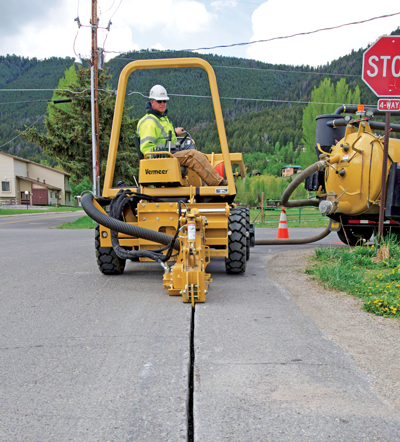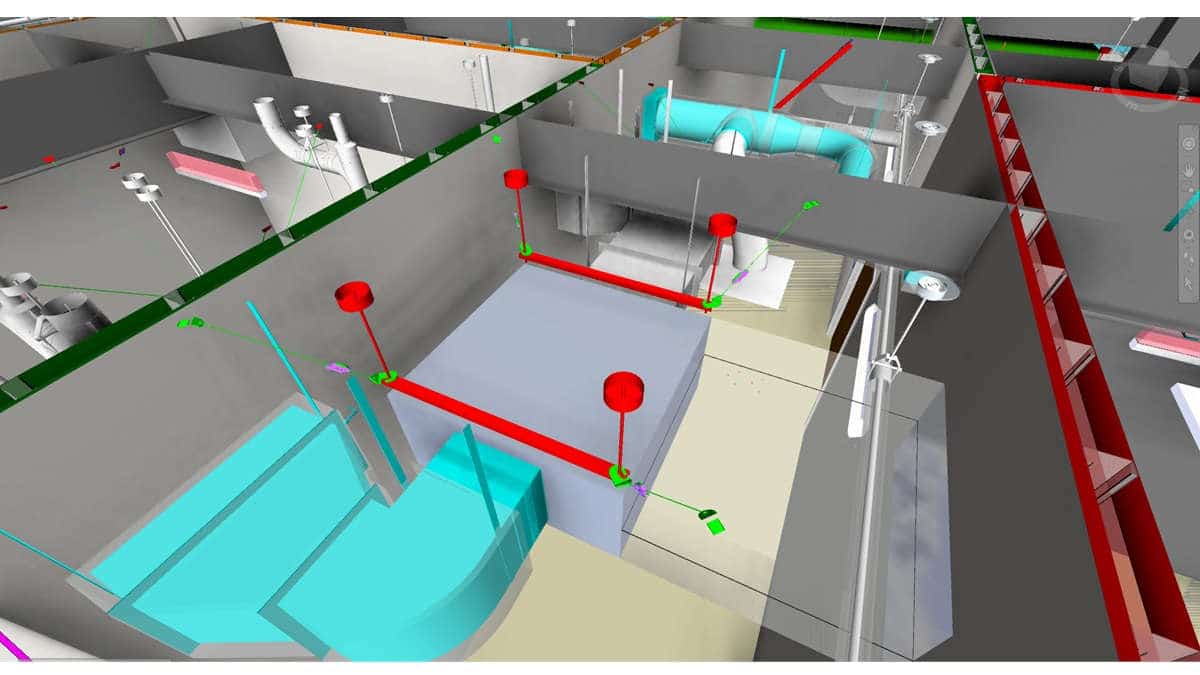Supply and Demand
Given the rapid increase in Internet usage and the growing number of handheld devices in use, it’s not surprising that fiber-optic networks are becoming inadequate. This was especially true for Jackson, Wyo., an area that welcomes millions of outdoor enthusiasts each year who come equipped with smartphones, tablets and other electronics ideal for travel.
The quaint, picturesque town of Jackson is a major gateway for millions of tourists that come here to experience Grand Teton National Park, Yellowstone National Park and the National Elk Refuge located nearby. In addition to serving the 9,800 residents of Jackson, it was imperative that Silver Star Communications — the privately-owned network telecommunications provider that has served the area since the mid-1920s — take proactive steps to enhance network broadband capabilities for the masses of visitors to the Jackson Hole region each year.
After securing two grants, awarded to Silver Star by the National Telecommunications and Information Administration (NTIA) and Broadband Technology Opportunities Program (BTOP), the company officially launched the Teton Broadband Project in the spring of 2011. The NTIA/BTOP program supports middle mile projects that help feed the fiber to the Internet, mobile phone and other communication networks that serve consumers.
The grant monies, along with co-funding by Silver Star, provided the capital necessary to initiate an extensive fiber upgrade — spanning more than 120 miles, including the town of Jackson — that would provide more reliable connections to Community Anchor organizations throughout the entire Jackson Hole region.
“Jackson had been the missing link, literally, to creating a redundant fiber network throughout the state,” says Ron McCue, President and COO of Silver Star Communications. “We had been searching for viable ways to close this gap in the fiber network for many years. The route of the Teton Broadband Project’s 120 miles of fiber-optic cable closes the Wyoming survivability ring and connects the Wyoming fiber loop to the Idaho loop. As a result, communications in the valley, and the state as a whole, were made more reliable.”
The “survivability ring” cited by McCue was coined because when connected, the loop basically ensures that even if fiber is severed, data can be rerouted in the other direction along the loop to still reach its destination. Without a redundant loop, data can hit a dead end in the event of damage to the fiber. Hence, the Teton Broadband Project completes the infrastructure for the fiber-optic ring around Wyoming.
Efficient Installation
Track Utilities, headquartered in Meridian, Idaho, was awarded the Togwotee Pass portion of the project, which involved installing 1 ¼-in. conduit that serves as the protective housing for the several strands of fiber-optic cable inside. Each strand of fiber is able to carry 1,000 times the bandwidth and travel 100 times farther than copper wire.
The installation route for the elaborate Teton Broadband Project is situated within the most remote and arduous places in the region, including the environmentally delicate Teton and Togwotee Passes and Grand Teton Nation Park. Sensitive to the important natural resources that compose the area, Silver Star collaborated with numerous public agencies and private entities in advance to devise a plan with the least amount of disruption and sensitivity for maintaining the integrity of the environmental landscape.
To that end, the winning bid, submitted by Track Utilities, was based on a combination approach using both directional drilling and conventional trenching, along with an innovative new microtrenching method engineered specifically for fiber installations. The microtrenching system helped minimize footprint and disruption to businesses and residents located along the installation route within the Jackson city limits.
“We were introduced to the microtrenching system during a discussion about the Teton project with our Vermeer sales representative, located in Napa, Idaho,” says Allen Butler, who along with business partner Shane Mace, founded Track Utilities in 2002. “Here in the Jackson city limits, microtrenching spared a lot of disruption and expense, because there isn’t much excess spoil to deal with. The majority of the small volume of spoil is contained within a large vac unit, so cleanup and mess is minimal.”
 Clean, Concise, Consistent
Clean, Concise, Consistent
Developed by Vermeer, the microtrenching system is a method by which a narrow and relatively shallow trench is cut, typically on one side of an asphalt roadway. Trench dimensions range from ¾ to 2 ¼ in. wide and from 8 to 16 in. deep. While cutting, a vacuum system connected to the cutter wheel attachment diverts and transports the spoil away from the worksite.
Once the conduit material is laid, the narrow, shallow trench is backfilled with a grout compound. Minimal cutting width helps boost installation production and efficiency by reducing the volume of backfill grout required to complete the installation. The only remaining evidence that the microtrencher had been there is what appears to observers as a tiny seam in the asphalt, yet the integrity of the paving material remains intact and uncompromised.
“The small footprint and minimal disruption to surface areas make microtrenching an attractive fiber-optic installation option, especially in congested urban settings and established residential areas,” says Butler. “The width of the microtrench is just a little greater than 1 in. and we tried to keep the depth as close to 12 in. as possible. This results in minimal spoil. The narrow trench width helps minimize impact on residents — compared to a backhoe or conventional trencher — since they can drive over top of it shortly after the trench is cut.
“We used microtrenching to install more than 5,000 ft of fiber within the Jackson city limits and when the installation was complete, most residents weren’t even aware that we had been there or that anything had been installed,” Butler continues. “Most were more curious about the cause of what appeared to be a tiny seam in the pavement.”
The microtrenching system operated by Track Utilities is specially configured for operation by the Vermeer RTX550 utility tractor. The 72.4-in. width of the tractor, equipped with solid rubber tires and a 1,500-lb max capacity reel carrier is ideal for fiber-optic installations where tight spaces and maintaining the integrity and aesthetics of the landscape are concerns. Production rates realized by Track Utilities’ microtrenching operators varied somewhat, depending on the configuration of asphalt and soil condition beneath.
“A lot of our production variation was dependent on the thickness of the asphalt and what lies beneath,” says Butler. “In areas where we were cutting through 2- to 3-in. asphalt with three-quarter base underneath, we averaged 600 to 700 ft on average a day. The microtrenching attachment is positioned approximately 2 to 3 ft from the edge of the curb, placing hand holes back behind the curb and sidewalk.
With the conduit and fiber secured firmly at the bottom, the narrow trench is then filled with concrete slurry to within 1 in. of the top. After the slurry sets and dries, Butler’s crews seal coat over the top of the slurry. “Basically, what remains is what appears to be a tiny seam in the road,” Butler says. “It’s a lot less intrusive to the cars and pedestrian traffic.”
“Everything worked great with the microtrenching system,” says Butler. “Our biggest challenge was the traffic and congestion that comes with working in a resort area and a tourist destination. We wanted to make sure that as few people as possible were affected, and for those who were, that the effects were minimal.
“We tried to get an early start in the season before it gets super busy, but Jackson is more of a year-round destination so minimizing footprint and inconvenience was very important. Using the microtrenching system within the tight spaces along the street of Jackson was the perfect application. The Jackson fiber project has been among the most efficient and productive fiber installations completed by Track Utilities.”
Randy R. Happel is a Features Writer for Two Rivers Marketing, based in Des Moines, Iowa.




